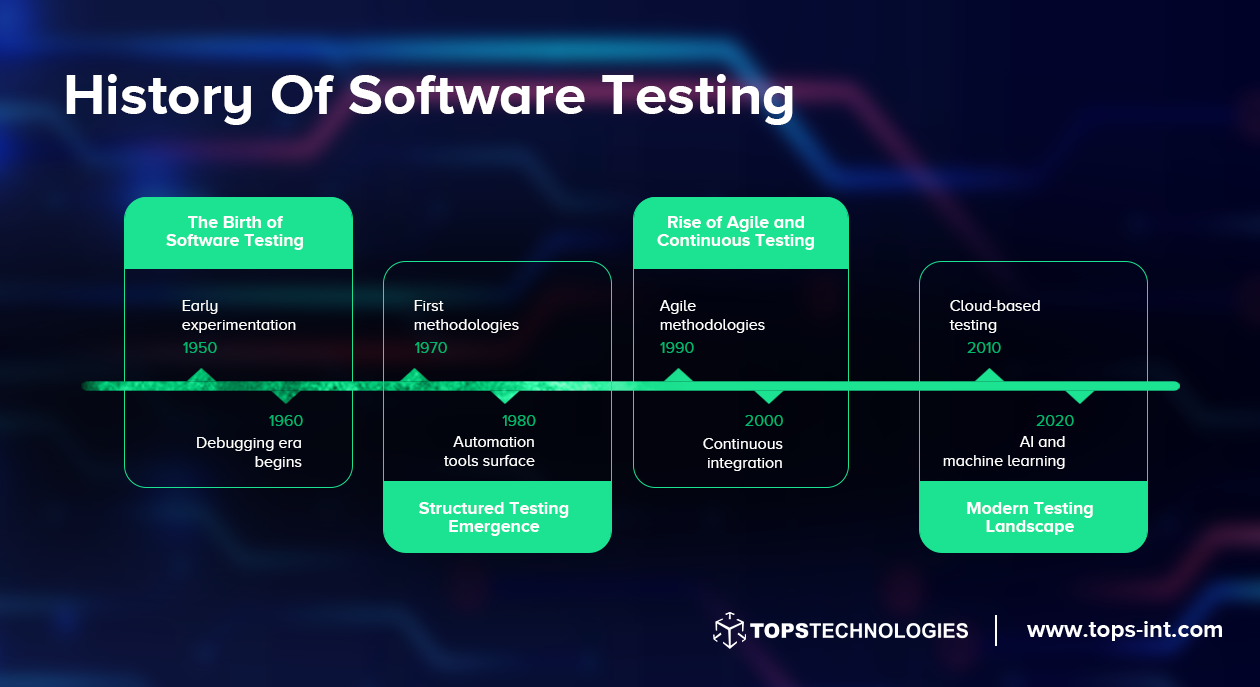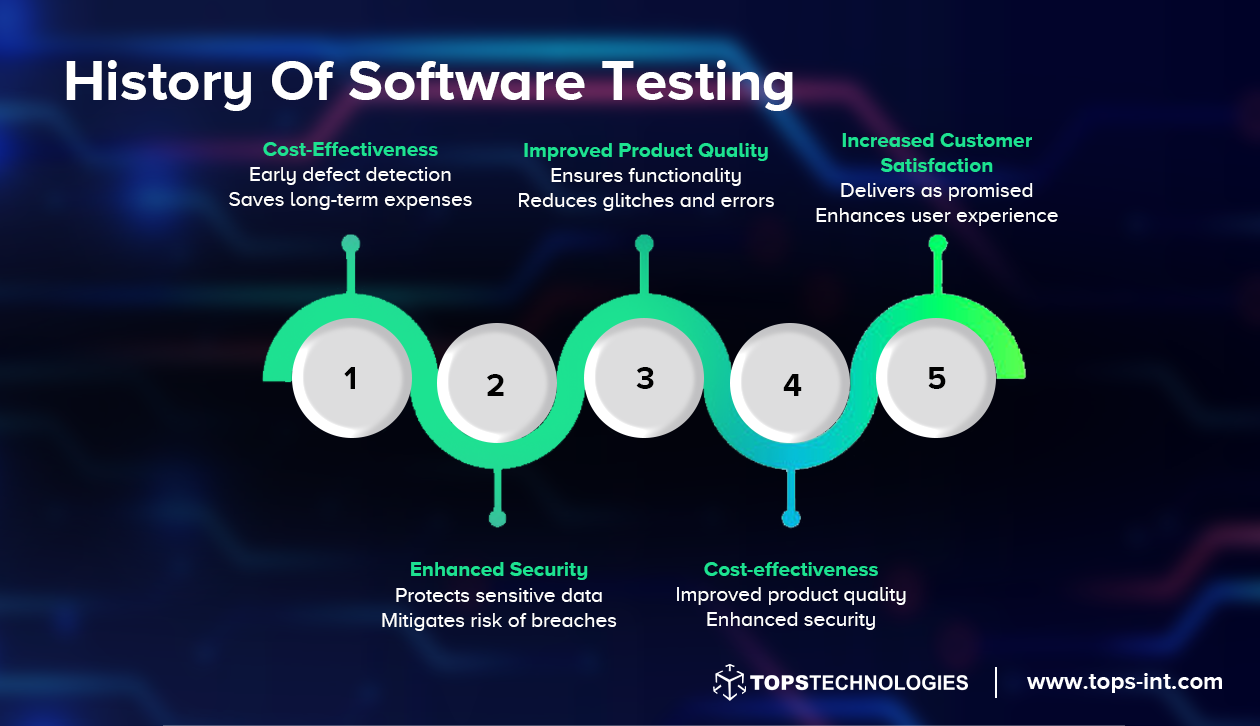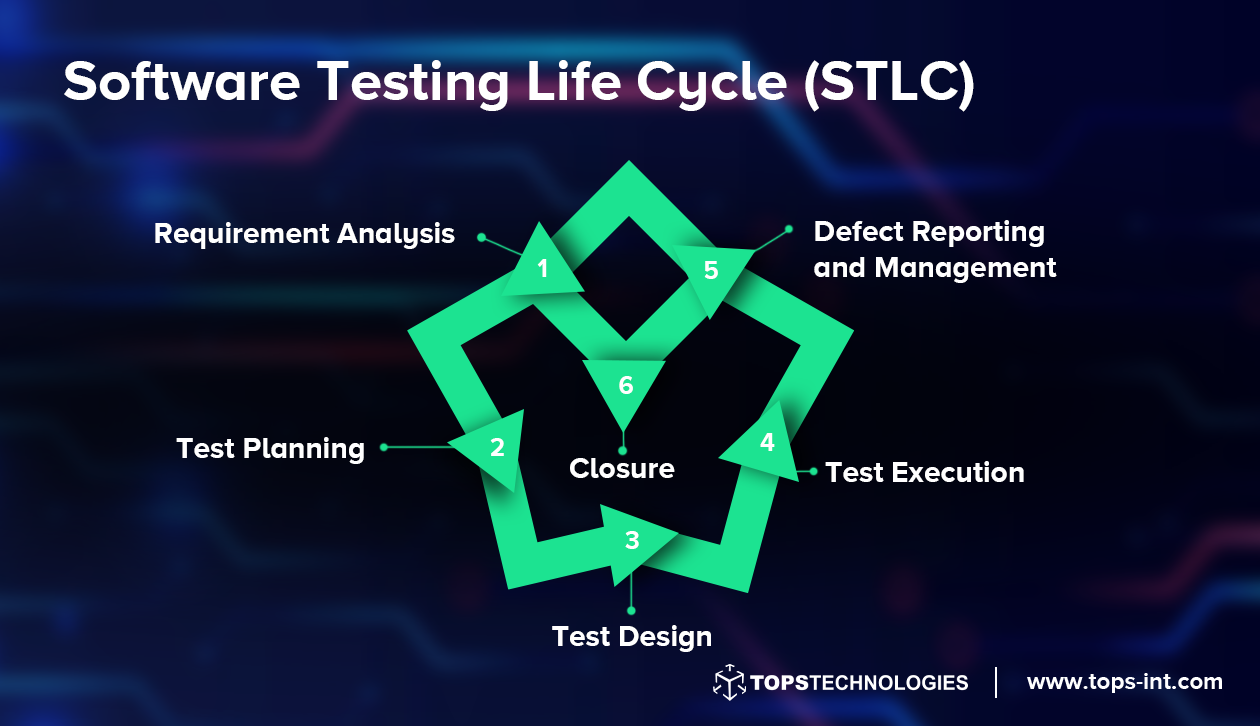Ahmedabad, a bustling city known for its rich cultural heritage and modern technological advancements, is fast becoming a hub for IT professionals. Unsurprisingly, many seek a Software Testing Course in Ahmedabad to enhance their skills and career prospects.
What is Software Testing? Software testing is the process of evaluating a system or its components to find errors. It ensures that the developed software meets the specified requirements and functions correctly.
- Identifying Errors: Finding bugs and inconsistencies hidden within the system.
- Assuring Quality: Making sure the software meets the desired quality standards.
- Validation and Verification: Ensuring the system performs as expected and meets the user's needs.
- Compliance with Requirements: Checking if the software fulfils the criteria and expectations laid out at the beginning.
The main goals and objectives of software testing include:
- Error Detection: Discovering and fixing any faults or flaws in the software.
- Performance Assessment: Analysing how well the software performs under various conditions.
- User Satisfaction: Ensuring the end product meets the user's expectations and requirements.
- Preventing Issues: Identifying potential problems early in the development cycle to avoid bigger issues later on.
Software testing helps deliver a reliable and efficient product by focusing on these key aspects. It is essential for building trust with the users and maintaining a strong reputation in the market.
History Of Software Testing
Here is a detailed history of software testing:

Different Types Of Software Testing
Let's delve into the main types of software testing and some examples of software testing techniques. We will talk about software testing manual and automation, functional, regression, etc.
Manual Testing
Manual Testing is a method where testers manually execute test cases without using automated tools. This hands-on approach enables a more intuitive understanding of the application's user experience and visual appeal. You may enroll in a
Manual Testing Course and master this technique.
- Example: Manually checking the visual layout of a webpage for alignment and design consistency.
Automated Testing
Automated Testing deploys specialized tools to execute tests and compare actual outcomes with expected results. It's an efficient way to perform repetitive tasks and offers precise, rapid results. Enroll in an
Automation Testing Course to learn this properly and land a high-paying job!
- Example: Running automated scripts to verify the functionality of a login page.
Read More: What is the Difference between Manual and Automation Testing
Functional Testing
Functional Testing focuses on the specific functions of the software. It ensures that each application part works as intended and conforms to the specified requirements.
In such a critical process, tools like Selenium come into play. Selenium is a powerful open-source tool specifically designed for automating web browsers, providing testers with the flexibility to write scripts in numerous programming languages. If you're keen to delve deeper into this field, consider enrolling in a
Selenium Course.
- Example: Testing a calculator's additional functionality.
Non-Functional Testing
Non-Functional Testing looks at aspects not directly related to specific user actions, such as performance, reliability, and scalability. It ensures that the software performs well under various conditions.
- Example: Measuring how the system behaves under the load of multiple users.
Regression Testing
Regression Testing is vital in continuous development, ensuring that new changes don't break existing functionality. It verifies that the previously developed and tested software still functions after a change.
- Example: Re-running previous tests after code updates.
Benefits of Software Testing
Here's a concise breakdown of the benefits of software testing:

Software Testing Life Cycle (STLC)

Let's dive into the Software Testing Life Cycle (STLC):
Requirement Analysis
The Requirement Analysis phase is the first step in the software testing process. This stage is crucial for understanding both functional and non-functional requirements.
It helps in defining the scope of testing, identifying what needs to be tested, and ensuring that all requirements are clear and concise. Requirement Analysis provides a solid foundation for the subsequent stages in the STLC.
Test Planning
In the Test Planning phase, the team outlines the testing strategy, determines the resources needed, sets the timeline, and decides on the tools and methodologies that will be used.
This stage is integral for crafting a comprehensive testing plan, aligning the team with their responsibilities, and setting clear objectives. Effective Test Planning helps in keeping the testing process well-organised and ensures that all necessary preparations are made.
Test Design
The Test Design phase involves the creation of detailed test cases and scripts to validate the application's functionality. By designing comprehensive test cases that cover various scenarios, testers ensure that every aspect of the software is examined.
Test Execution
During the Test Execution phase, the designed test cases are run on the actual software. This stage involves methodically executing each test, monitoring the results, and managing the test environment.
The Test Execution process allows for continuous testing, offering immediate feedback and ensuring that the software meets the desired specifications.
Defect Reporting and Management
When defects are found during testing, the Defect Reporting and Management phase comes into play. This stage involves logging the defects, tracking them, prioritizing, and working closely with the development team for fixing.
Coordinated efforts between testers and developers ensure that defects are adequately addressed, leading to an overall improvement in software quality.
Closure
The Closure phase represents the conclusion of the testing efforts. Finalizing testing, summarising the findings, and generating a comprehensive report are the primary tasks in this stage.
A well-documented closure helps in drawing insights into what was achieved, lessons learned, and areas for future improvement. It ensures a well-rounded conclusion to the STLC, reflecting on the entire testing process.
The Software Testing Life Cycle is a systematic approach to ensuring software quality, functionality, and reliability. By following these stages, teams can create a coherent testing strategy that aligns with the software's objectives and quality standards. If you live in tech hubs like Surat, there are many affordable
Selenium Testing Courses in Surat you may enroll in o get started in software testing!
Software Testing Jobs For Freshers
Here's a table providing details on entry-level positions, required skills, and the average salary for newcomers in the field of software testing:

Best Practices in Software Testing
By adopting best practices in software testing, teams can achieve efficient and effective testing processes. Here's an overview:
Testing Methodologies: Agile, Waterfall
- Agile Testing: This methodology emphasises continuous collaboration, iterative development, and flexibility. Agile Testing allows for quick response to changes and focuses on continuous improvement.
- Waterfall: A more traditional approach, the Waterfall methodology follows a sequential process. Each phase must be completed before the next begins, making it less flexible but often more structured.
Agile and Waterfall have unique attributes, and choosing the right approach depends on project needs, team dynamics, and overall goals.
Importance of Early Testing
- Early Detection of Issues: Testing early in the development cycle helps uncover defects when they are relatively easier and less costly to fix.
- Enhanced Quality: Early testing promotes better understanding and communication within the team, leading to a higher-quality product.
Incorporating testing from the initial stages of development can significantly enhance the efficiency and effectiveness of the testing process.
Continuous Improvement aligns with the principles of Agile Testing and is vital for maintaining quality standards, adapting to changing requirements, and fostering a culture of innovation and growth.
Challenges in Software Testing
Software testing isn't always smooth sailing. Here are some bumps in the road that testers often encounter:
- Lack of Clear Requirements: Without a clear roadmap, you're driving blind. Understanding exactly what needs to be tested is essential.
- Insufficient Time: Rushing through testing? That's a recipe for missed bugs and problems down the line.
- Resource Constraints: Without the right tools and team, testing becomes a significant struggle.
- Communication Gaps: If everyone's not on the same page, misunderstandings can lead to improper testing.
Enroll in a Software Testing Course with Placement: A Smart Move
- Learn Correctly: Get trained by experts who've been in the trenches. They'll show you the ropes, teach you the best practices, and help you avoid common pitfalls.
- Avoid Challenges: By learning from pros, you'll be better prepared to tackle those testing challenges head-on.
Here's the cherry on top. With proper training from top institutes like TOPS Technologies, you'll not only know your stuff but also have the credentials to prove it. Companies value skilled testers, and that means better job opportunities and higher paychecks.
Conclusion
The Indian tech industry is witnessing a sharp rise in software testing job postings, a clear indication of the field's importance in today's technology-driven world.
If you're aspiring to enter this promising field, with its
15 years in the
IT Training & Placement industry, TOPS Technologies can be your guiding star. With over
1 Lakh students placed, tie-ups with
3000+ companies, and
19+ offices across India, we provide comprehensive
Software Testing Courses that set you up for success.
Enrolling in a course with TOPS Technologies not only equips you with essential skills but connects you to a network that can lead to a high-paying job. Make your career move count with TOPS Technologies, a proven leader in the field.
FAQs
What Is Software Testing?
Software testing is a process to evaluate the functionality of a software application and ensure that it is free of defects and performs its intended functions correctly.
How Can I Learn Software Testing?
You can learn software testing through various online tutorials and books or by enrolling in a specialized software testing course. Software testing courses in Ahmedabad offered by institutes like TOPS Technologies is a popular option.
What Are the Different Types of Software Testing?
There are various types, such as Manual Testing, Automated Testing, Performance Testing, and Security Testing, each serving a specific purpose in the software development lifecycle.
Why Is Software Testing Important?
Software testing ensures the quality, functionality, and security of the software. It helps in identifying bugs early, reducing costs, and enhancing customer satisfaction.
Can Freshers Get Jobs in Software Testing?
Yes, freshers can secure jobs in software testing. Many companies hire entry-level testers, and having a certification or completing a relevant course can boost your chances of landing a job.









